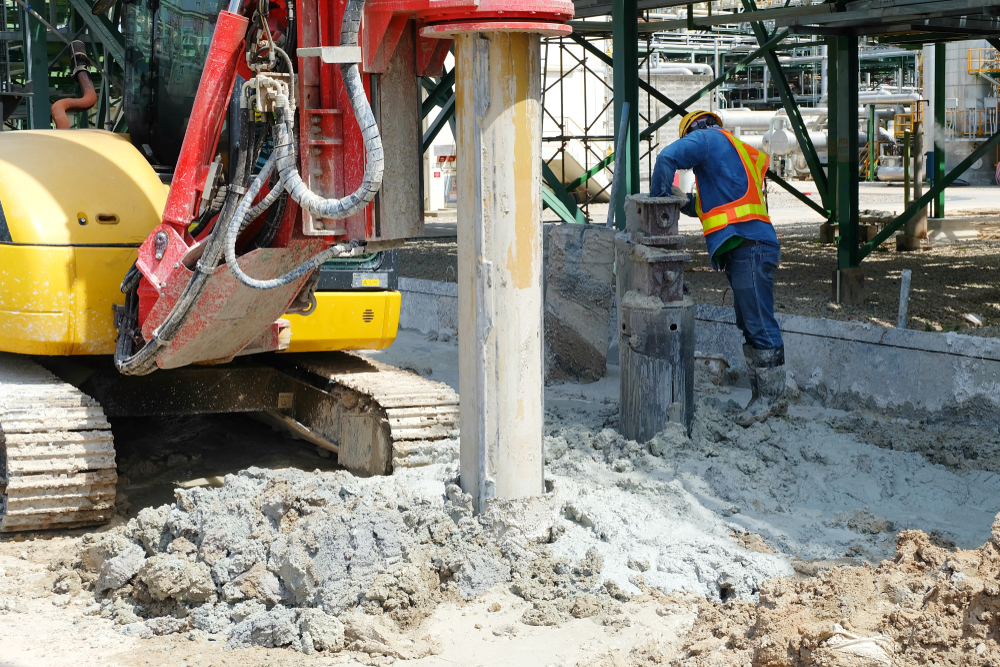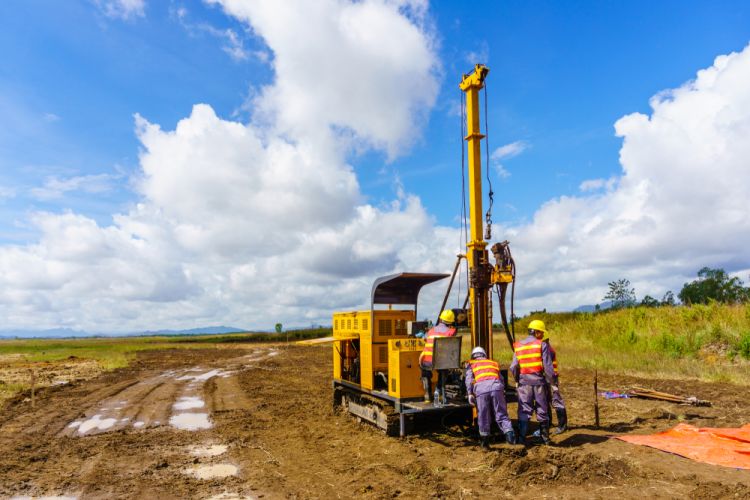The Best Strategy To Use For Geotechnical Engineering For Construction Projects
The Best Strategy To Use For Geotechnical Engineering For Construction Projects
Blog Article
Getting The Geotechnical Engineering For Construction Projects To Work
Table of ContentsThe Single Strategy To Use For Geotechnical Engineering For Construction ProjectsGeotechnical Engineering For Construction Projects Things To Know Before You BuyGet This Report about Geotechnical Engineering For Construction ProjectsThe Best Guide To Geotechnical Engineering For Construction ProjectsLittle Known Facts About Geotechnical Engineering For Construction Projects.
Throughout the investigation, it is vital to pierce at the called for depth and the needed number of openings as per the suggestion of the Canadian Foundation Style requirement. Occasionally, the owner might conserve some Geotechnical Examination expense however end up investing greater than the expected during the building and construction expense.The responsibilities of the geotechnical expert entail offering product screening for construction assistance. Geotechnical Engineering for Construction Projects. Geotechnical engineers analyse all the area examination reports to make certain that construction is taking place as per the project specification. Throughout construction, a confirmatory examination for dirt compaction is done on-site to guarantee that no future settlement takes place
After the concrete is put -7 days and 28 days- examinations are conducted on concrete examples accumulated from the website to guarantee that the concrete put fulfills the design requirement. Asphalt core is taken after the Asphalt is laid and compressed to verify that it meets the design standard. All laboratory examination records are analysed by the Geotechnical Engineer to ensure that it satisfies the project specification.
The Of Geotechnical Engineering For Construction Projects

Geotechnical engineering plays a vital function in making sure the stability of building and construction tasks. Find out how it impacts design and total job success. Geotechnical engineering is an essential branch of civil design that concentrates on comprehending the practices of planet products, such as soil and rock. It involves evaluating subsurface problems to make certain that a structure's foundation or infrastructure is steady and safe and secure.

For a trusted foundation and a smooth building and construction procedure, depend on to offer the proficiency you need. Call to obtain specialist advice and geotechnical solutions tailored to your following project.
The Best Guide To Geotechnical Engineering For Construction Projects
When starting a land development task, recognizing the ground beneath your feet is as important as the structures you prepare to build above it. Our Geotechnical Engineering group analyse the ground, guaranteeing it appropriates for the suggested development while supplying you with the details needed to meet your project objectives.
Geotechnical Engineering checks out the formation of the ground, as it is the foundation for all tasks. Where frameworks need to be created with respect to the ground conditions; ground conditions (e.g., soft ground) may need strengthening depending upon the size of the intended structure. Prior to building, you need to learn about the groundwater, soil structure, and liquefaction probability of your land.
For sites that are not linked on the regional authority facilities extra site examinations would certainly be required to offer technological inputs for on-site stormwater and wastewater. We have experienced Geotechnical Designers based in each workplace, supporting your geotechnical demands across the country. Reach out to us to discuss exactly how we can support your following task.
These reports are customized to meet the specific requirements of a task and consist of design parameters and advice for the construction of a series of manufactured structures. As offering working as a consultant solutions covering areas such as slope stability and load-bearing capacities for different products, these engineers carry out study and advancement activities to boost approaches, tools, materials knowledge and analysis covering entire lifecycles.
A Biased View of Geotechnical Engineering For Construction Projects
Rates of pay typically increase as your knowledge and abilities expand, with standards aiming to a graduate beginning wage of in between 18,000 and 28,000 per year in the UK. This climbs to 26,000 to 36,000 with a few years of experience and afterwards getting to 40,000 to 60,000+ for senior, legal or master engineers.
With the best application it is possible to understand the occupation and gain access to a challenging yet fulfilling and important job. A rock hound would require to re-train to come to be a geotechnical engineer, although there is lots right here of cross-over in between the 2 careers, which can make this much easier - Geotechnical Engineering for Construction Projects. Rock hounds need to have an understanding of soils, rocks and various other products from a scientific perspective, while geotechnical designers tale their knowledge of issues such as soil and rock auto mechanic, geophysics and hydrology and use them to engineering and ecological projects
When beginning out, these designers will tend to function on much less complex tasks, developing up knowledge and experience prepared for even more tough work later on. Geotechnical designers have a tendency to be experts in specific locations as they grow in experience, focusing on specific infrastructures such as trains, roadways or water. These designers additionally function with renewable resource, offshore and onshore oil and gas, nuclear power, and a lot more.
Geotechnical Engineering For Construction Projects - The Facts
The moment required to become a geotechnical designer depends on where you are based, where you research and what level of education you intend to attain before getting in the workplace. For instance, are you mosting likely to explore an apprenticeship, take an university level or job on in the direction of a Master's or PhD? Generally-speaking it takes 3-4 years to get to the fundamental requirements to start a job as a geotechnical engineer.
These operations allow professionals to assess a host of soil technicians including weight, porosity, void-to-solid more particle ratio, permeability, compressibility, maximum shear stamina, birthing capacity and deformations. If the structure needs a deep foundation, engineers will certainly use a cone penetration examination to estimate the amount of skin and end bearing resistance in the subsurface.
When analyzing a slope's balance of shear stress and anxiety and shear strength, or its ability to stand up to and go through movement, rotational slides and translational slides are commonly considered. Rotational slides stop working along a bent surface, with translational slides occurring on a planar surface. A professional's goal is to identify the conditions at which a slope failing could happen.
Frequently, searchings for recommend that a website's dirt should be dealt with to improve its shear stamina, tightness and permeability prior to style and building and construction. When it comes time to outline structure strategies, professionals are significantly focused on sustainability, more particularly exactly how to reduce a structure's carbon footprint. One technique has been to change 20 percent of a foundation's concrete with fly ash, a waste item from coal fire here power plants.
Report this page